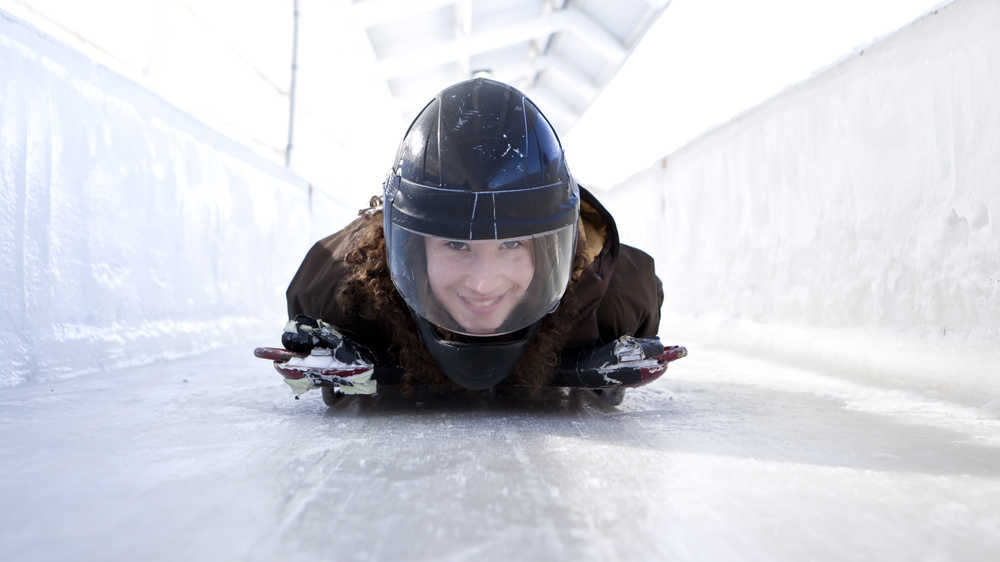LAKE PLACID, N.Y. — Sledding can be pleasant and pastoral, with big toboggans, snowy hills and rosy cheeks. And then there’s skeleton sledding: belly down, head first on a sled the size of a throw rug, hard ice whooshing by your face.
The site of the 1980 Winter Olympics at Lake Placid offers the rare chance to try this lesser known sliding sport on its twisting sled run. For $75, visitors on winter Saturdays can take a skeleton ride on the wild slide. While racers take running jumps onto their sleds and can exceed 80 mph, visitors are pushed off about halfway down the run and can hit 30 to 40 mph.
Still, the 40 seconds zip by on the little sled.
“A lot faster than I thought it was going to be,” said Scott Hayes of Toronto. “You think, ‘Ah well, I mean it’s a public ride, how fast can it go?’ But it went really fast.”
Hayes was among more than a dozen thrill-seekers who showed up recently at the Olympic Sports Complex down the road from the village of Lake Placid. Riders were driven midway up the run and fitted for helmets and sleds, which are low to the ground and stretch from riders’ shoulders to knees.
Coach Rebecca Sorensen gave instructions: grab handles on side, elbows straight, shoulders down, the less you move the better.
“Hold on to the sled at all times,” Sorensen added, as if this would ever be an issue.
Then she pushed riders off. Gravity does the rest as the sleds snake through the U-shaped track. Riders are sort of like human missiles, able to lift their chins to see the upcoming twists closing in fast. One last turn and then a gentle upgrade slows the sleds down.
Sleds are trucked back up the hill for the next amateur. Riders work through their adrenaline rush. Jillian Frascoia of Richmond, Vermont, raised her arms and cheered after her run.
“It was so fast, much faster than I thought, much scarier than I thought,” she said. “It was great!”
Skeleton reportedly got its name from the “bony” appearance of early sleds from the late 19th century. Often eclipsed by bobsled and luge, skeleton returned to the Olympics in 2002 after a 54-year hiatus.
In fact, far more people show up later in the morning when the Olympic center switches to offering bobsled rides.
The bobsled riders get to climb into a more substantial sled with other passengers. And they get to sit. Last year, there were 10,917 bobsled rides at the complex, versus 1,166 skeleton rides.
The bobsled crowd seems more family oriented. Skeleton riders seem to like their thrills closer to the bone.
“You can go tobogganing or sledding and it’s not the same thing,” said Karen Lonnstrom of Voorheesville, New York, “so this will be a once-in-a-lifetime kind of experience.”

